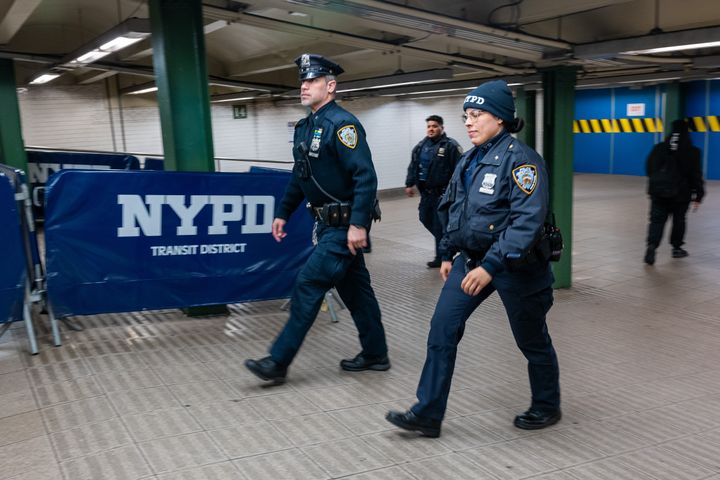New York Gov. Kathy Hochul (D) announced Wednesday that she’s dispatching 1,000 law enforcement officers, comprised mostly of National Guard members, into the New York City subway system following recent attacks on riders and employees.
The plan is for 750 National Guard officers, and 250 state and MTA police officers to patrol, conduct bag checks and deter criminal activity in the city’s busiest transit stations.
“These brazen, heinous attacks on our subway system will not be tolerated,” Hochul said at a press conference, highlighting recent attacks: a 64-year-old man being kicked into the tracks at Penn Station on Sunday, a 27-year-old rider getting slashed on the hands in an apparent homophobic attack Friday and a subway conductor named Alton Scott being slashed in the neck on Thursday while leaning his head out of the train.
Some of the attacks have also turned deadly. Last month, six people were shot on the platform of a Bronx subway station, leaving one dead. Another rider was killed on a train in the Bronx last month following either a gunshot wound or a puncture wound to the chest.
While the incidents Hochul highlighted are chilling, the reality is there has been a relatively small uptick in crime in transit spaces compared to last year. The New York Police Department has tallied 388 crimes in the subway system from the first of the year through March 3, compared to 343 in that same time period last year.
And according to NYPD data, crime rates in transit spaces have held relatively steady over 20 years, with an uptick in 2020 being the exception.

But Hochul dismissed the data Wednesday.
“I’m not here today to talk to you about numbers and tell you stats and statistics about what’s going up or what’s going down,” she said at her press conference. “I’m here to take action because that’s what the situation requires, rattling off statistics. Saying things are getting better doesn’t make you feel better.”
In addition to the increased police presence, Hochul says she plans to speed up and expand the installation of cameras in rider and conductor cars.
“If a camera had been positioned on all Alton Scott’s conductor cabin last Thursday, we probably would have already apprehended the person who slashed his neck,” she said of last week’s attack on the conductor. “Or maybe they wouldn’t have done it at all if they knew there were cameras watching their every move.”
That’s a big maybe; research on the effectiveness of surveillance cameras as a crime deterrent are mixed. A 2020 study of CCTV systems in various countries conducted by researchers at multiple universities found a 13% decrease in crime in areas with cameras, but they did not have a significant effect on the types of violent crime Hochul says she’s trying to stop.
Her plan was slammed by the New York Civil Liberties Union as a disproportionate reaction that will inevitably lead to racist policing.
“This is another unfortunate example of policymaking through overreaction and overreach. These heavy-handed approaches will, like stop-and-frisk, be used to accost and profile Black and Brown New Yorkers,” NYCLU executive director Donna Lieberman said.
“This plan is whiplash inducing,” she continued. “The city only recently trumpeted safety data. Sound policy making will not come from overreacting to incidents that, while horrible and tragic, should not be misrepresented as a crime wave and certainly don’t call for a reversion to failed broken windows policies of the past.”
Hochul’s office did not immediately respond to requests for comment on how much the increase policing and camera installations will cost New Yorkers.
Disclaimer: The copyright of this article belongs to the original author. Reposting this article is solely for the purpose of information dissemination and does not constitute any investment advice. If there is any infringement, please contact us immediately. We will make corrections or deletions as necessary. Thank you.
